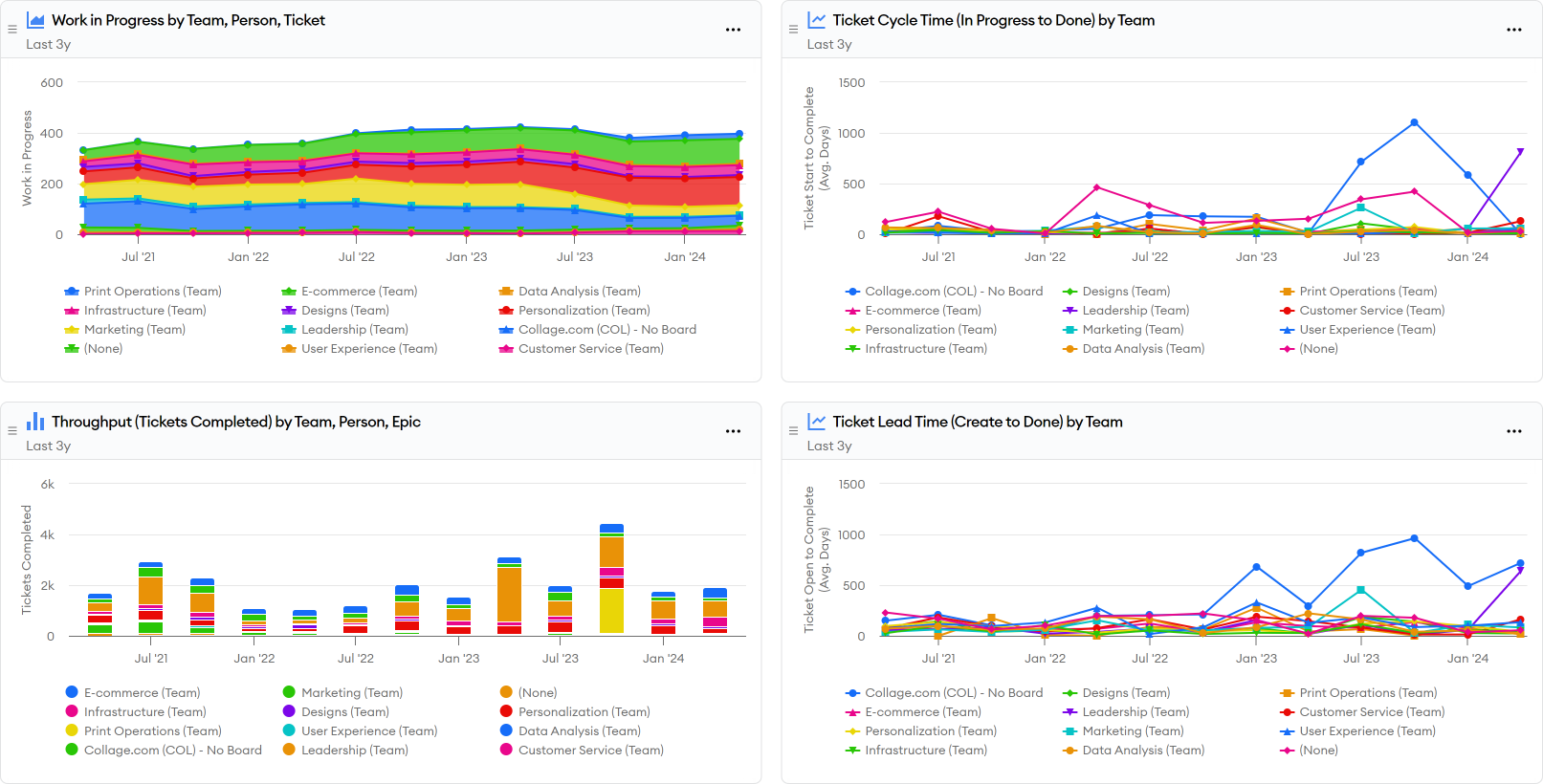Kanban Essentials

The kanban essentials report tracks 4 key kanban metrics recommended by Atlassian. These metrics will ensure that work is flowing efficiently through your kanban board and help you quickly spot bottlenecks. The four key metrics in this dashboard are the following
Work in Progress
This shows the number of tickets that are currently in an in-progress state. Simple math dictates that the more things you’re doing at the same time, the longer each one will take. You should strive to keep work in progress to consistently low levels by eliminating wait time and bottlenecks that cause the team to start on the next task before the last one is complete.
Ticket Cycle Time
Cycle time is the time between work starting on a ticket and the ticket being marked done. It measures how quickly the team is able to handle each ticket. You should ideally keep cycle times consistent and work to decrease them by eliminating roadblocks that cause wait time where there is no active work on a ticket. You can spot problems by looking at tickets with abnormally high cycle times.
Ticket Lead Time
Lead time shows the total time from when a ticket was created to when it was marked done. Essentially, it is cycle time plus queuing time – that is, the time before the team starts work plus time after the team starts work. When used in conjunction with cycle time, you should look for large discrepancies where tickets are backlogged for a long time, leading to higher lead times than cycle times. This can indicate that the team is overloaded or blocked from starting work on a ticket.
Throughput
Throughput is simply the rate of ticket completion. Ideally, throughput should be consistent over time. If it’s not, that may indicate that teams are doing work in batches, which is less efficient than working on tickets sequentially – also known as single-piece flow in lean terminology.
You should also look at whether the team’s throughput is comparable to the rate of work coming in. If it is consistently less, then lead times can balloon due to increased queuing time.